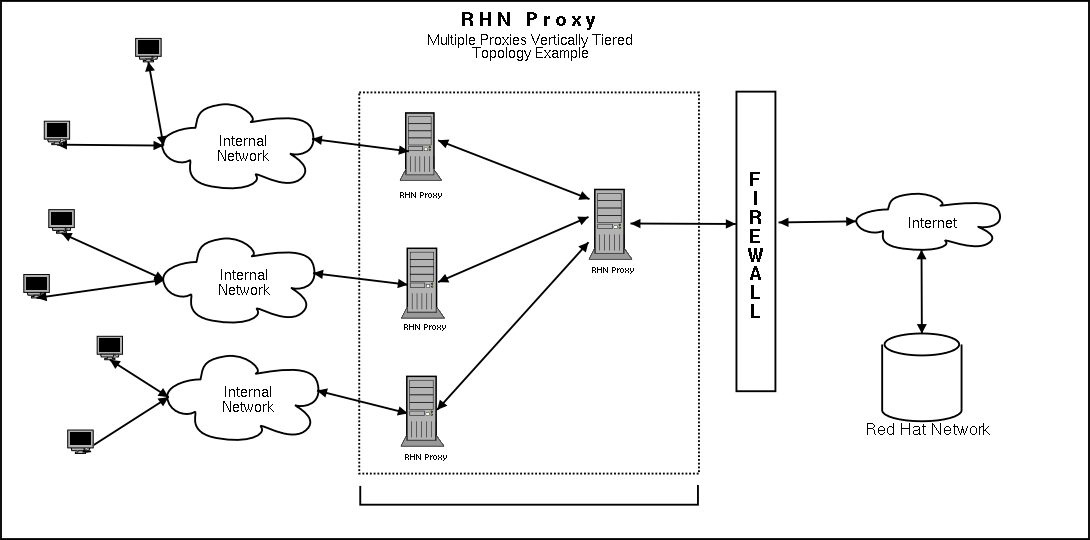3.3. Multiple Proxy Vertically Tiered Topology
An alternative method for multiple RHN Proxy Servers is to establish a primary Proxy that the others connect to for RPMs from Red Hat Network and custom packages created locally. In essence, the secondary Proxies act as clients of the primary. This alleviates the need to establish synchronization between the RHN Proxy Servers as they use the up2date functionality inherent with the product.
Like the horizontally tiered configuration, this vertical method allows any client of any RHN Proxy Servers to have all custom packages delivered to them. The Proxy merely looks in its repository to see if it can find the package on its filesystem. If not, it then makes the attempt from the next level up.
This vertically tiered configuration does have the drawback that the secondary Proxies depend upon the primary for updates from RHN, as well as custom packages. Also, custom channels and packages must be placed on the primary Proxy only to ensure distribution to the others. Finally, the configuration files of the secondary Proxies must point to the primary, instead of directly at Red Hat Network.
